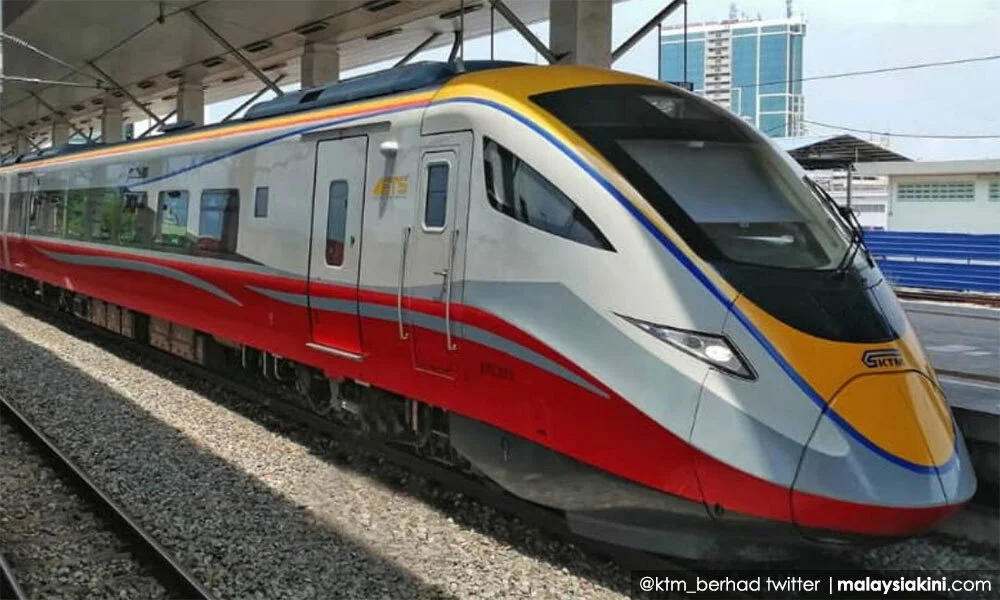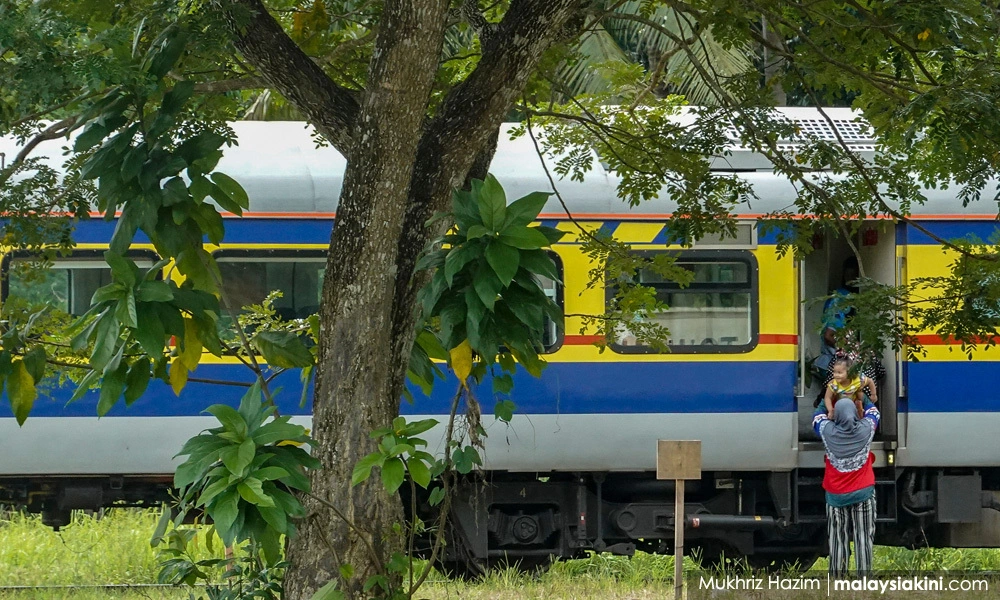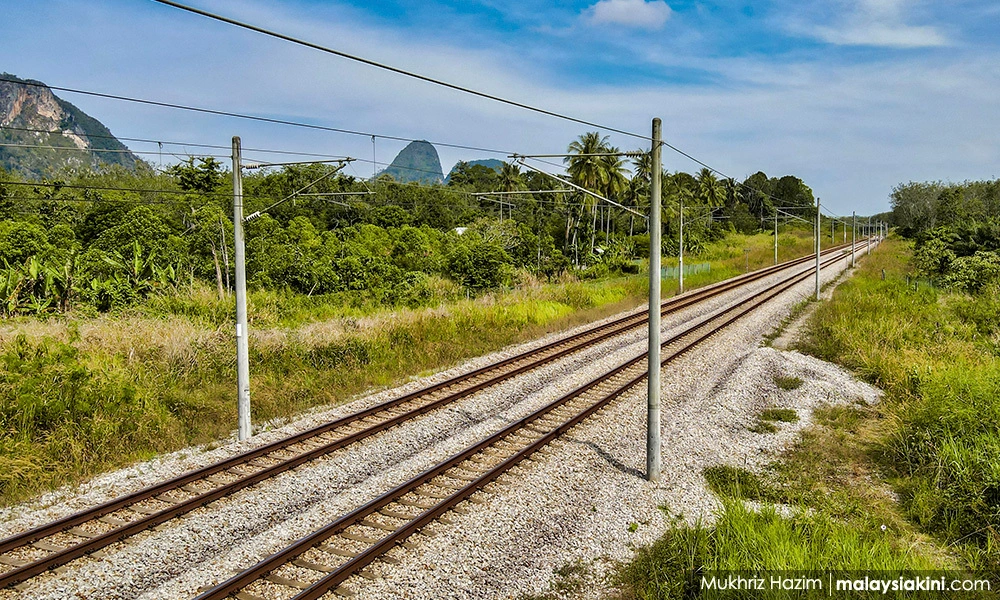Every Friday is both a blessing and a curse for Kee Yik Ting, a 44-year-old mother working in Kuala Lumpur’s city centre. She looks forward to the weekend trip to Kulai, Johor, to see her husband and two young children who live there, but the four-hour drive is challenging and dangerous.
“My company gives me one work-from-home day, so I usually start driving back to Kulai from Kuala Lumpur on Friday morning at 5:00am or 5:30am. It takes about four hours. I start working once I reach Kulai.
“I choose to drive before dawn to avoid traffic, but night driving is dangerous. It’s both risky and exhausting,” she said in an online video interview, adding that the 310-km drive can take 5.5 hours when traffic is bad.
When the weekend is over, she repeats the trip in the opposite direction in the early hours of Monday.
“To avoid congestion, I usually start driving to work from Kulai at 5:00am on Monday. The traffic on Monday is usually heavy, so it takes me at least 4.5 hours to reach my office.”
This has been her routine every week for three years.

Kee Yik Ting
She tried flying, but the timing is much less flexible. That’s why she’s counting down the days until the Gemas–Johor Bahru Electrified Double Tracking Project (EDTP) is completed.
“If traffic is smooth, the travel time, by car or by train, is more or less the same. But the biggest benefit is that I don’t have to stay on high alert for four hours. I could use that time to rest on the train or get some work done.
“It would greatly improve my productivity and quality of life,” she said with a smile.
“I’ve been eagerly anticipating the launch of this EDTP project from the very beginning. When they announced it would open at the end of August, I was thrilled. But when it only reached Kluang, I was quite disappointed.”
Kee’s wish is shared by thousands of Malaysians who travel regularly between Johor and the Klang Valley. And by the end of 2025, that wish is set to come true.

The new trains that will run on the Gemas-Johor Bahru Electrified Double Track railway.
Did you know this railway line between Gemas in Negeri Sembilan and Johor Bahru has been serving passengers for more than a century? For decades, diesel-powered trains have run on a single track — a system that’s slower, less energy-efficient, and requires more maintenance.
To modernize the line, the government started the construction of EDTP in 2017, upgrading it to a double-track electrified system that allows faster, cleaner, and more reliable electric trains to operate.
The Electric Train Service (ETS), operated by KTM, was first introduced in 2010 on the Kuala Lumpur-Ipoh route. The Gemas-Johor Bahru stretch is the final missing link in the West Coast Railway network, which runs all the way from Padang Besar near the Thai border down to Johor Bahru.
The EDTP is being completed in stages. Earlier this year, service was extended to Segamat, and five months later, electric trains began running as far as Kluang. Once fully completed by the end of this year, it will connect Malaysia’s southernmost city directly to the national ETS network.
So just how much time can this new train line save you compared to driving or taking the bus?
Let’s find out.
Usually how long does your travel take between Kuala Lumpur and Johor Bahru?
Now that you’ve seen how much travel time the EDTP can save, you might be wondering what makes it so efficient. The secret lies in its speed — powered by electricity and modern rail design. Can you guess how fast it travels?
Guess what's the average speed of EDTP?
It’s amazing how fast the new electric trains will be — but did you know Malaysia’s rail journey began over a hundred years ago? From the country’s very first line to today’s electrified routes, each track tells part of the nation’s story.
Explore Malaysia's railway network through an interactive map. Scroll through the content to discover the country's major railway lines and their historical significance.
West Coast Railway (1923)
Completed in 1923, the West Coast Railway was Malaysia's first major railway line. Stretching from Padang Besar near the Thai border in the north to Woodlands Train Checkpoint in Singapore, it formed the backbone of the nation's transportation network.East Coast Railway (1931)
Established in 1931, the East Coast Railway expanded the network to Tumpat in Kelantan on the peninsula's east coast via Gemas in Negeri Sembilan. It was a crucial infrastructure project that facilitated trade, tourism, and cultural exchange between the east coast and the rest of the peninsula.KTM Komuter in Klang Valley (1995)
With modernization and electrification replacing diesel-powered trains with electric ones, KTM Komuter was introduced in 1995, revolutionizing urban transportation in the Klang Valley. It was later complemented by the Light Rail Transit (LRT) system, launched in 1996.ETS for the northern states (2015)
The double-tracked Electric Train Service (ETS), running along the Gemas–KL Sentral–Ipoh–Butterworth–Padang Besar route, was launched in 2015. It offers faster and more efficient intercity travel across Malaysia's northern states.EDTP (2025)
Expected to be completed by the end of 2025, the EDTP will extend the Electric Train Service from Gemas to Johor Bahru, completing the full electrification of the West Coast railway line.ECRL (coming soon)
Scheduled for completion in 2027, the East Coast Rail Link (ECRL) will drastically reduce travel times for both passengers and freight, boosting economic growth and tourism in Malaysia's eastern states.In addition to economic benefits, the EDTP is expected to improve the experience of millions of Malaysian highway users even though they don't use the EDTP service. Why? Because when more people choose to take the EDTP, it means less traffic along the North-South Expressway (PLUS), creating a faster, safer and more comfortable journey for drivers on that highway, especially during festive seasons.
When we move people from driving to public transport like the EDTP, it also means less CO2 is emitted. We could enjoy better air quality and do our part to mitigate the climate crisis.
So, how exactly can taking the train instead of driving help the environment?
Let’s break it down. Every time someone drives from Kuala Lumpur to Johor Bahru, their car burns fuel and that releases carbon dioxide (CO₂), a major greenhouse gas that heats up our planet. On average, a petrol or diesel car emits around 160 grams of CO₂ for every kilometre travelled per passenger, while an electric train produces only about 33 grams, thanks to its cleaner and more efficient energy use.
Although we don’t know how many passengers will use the EDTP service, we can use the previous Gemas - KL Sentral - Ipoh - Butterworth - Padang Besar ETS service as a reference. According to train ridership data from the Ministry of Transport, after it was launched in 2015, the number of passengers taking ETS jumped from 1.692 million in 2014 to 4.148 million in 2016, an addition of almost 2.5 million passengers!
Now, imagine if EDTP had the same impact, another 2.5 million passengers would take the train instead of driving that 330km journey in a year. That’s 2.5 million × 330 km = 825 million passenger-kilometres.
Multiply that by the difference in emissions (160 g − 33 g = 127 g per km), and you get roughly 105,000 tonnes of CO₂ avoided each year. In other words, that’s how much less carbon would be released into the atmosphere if those travellers switched from cars to trains.
[2,500,000 passengers × 330 km × (0.160 − 0.033) kg CO₂/pkm ≈ 104,775,000 kg CO₂,
or about 105,000 tonnes of CO₂ each year. Refer to footnote at the bottom for technical details and sources.]
To put that into perspective, this saving equals the amount of carbon absorbed by a tropical forest the size of about 16,000 football fields in a single year. Imagine thousands of acres of lush rainforest, that’s the environmental boost EDTP could gain just by more people choosing the train.

Old train running through the countryside
The full ride is still a few months away, yet the EDTP has been delivering benefits since its construction started in 2017 boosting livelihoods, skills, and activity in towns along the line.
Although the mega-project was awarded to a Chinese consortium made up of China Railway Construction Corp (CRCC), China Railway Engineering Corp (CREC), and China Communication Construction Consortium (CCCC), the Malaysian government has made sure local businesses and workers aren’t left out of the picture.
SIPP-YTL JV, a partnership between SIPP Rail Sdn Bhd and Syarikat Pembenaan Yeoh Tiong Lay Sdn Bhd. is the local subcontractor working with the Chinese consortium. Their main job? Handling all the civil works, including upgrading the 11 stations along the railway route.
At its peak, the project employed around 1,500 full-time staff, with an even split between men and women. Out of every 10 workers, 8 are Malaysians, creating about 1,200 local jobs. Johoreans, in particular, can take pride — 4 out of every 10 employees hail from Johor, as a significant stretch of the railway line runs through the southern state.
And these aren’t just low-paying, manual jobs. Far from it — 78% of the workforce are degree holders, most of them engineers. That means the project isn’t only boosting employment but also providing high-skilled, well-paying opportunities. Here’s a quick look at the breakdown of engineering roles on the project:
Beyond creating jobs and developing local talent, another big part of Malaysia’s railway development story is how Malaysia is financing its new trains. Many have wondered why the government decided to lease the trains from China instead of purchasing them outright. The reason is both simple and strategic.
Last year Transport Minister Anthony Loke announced that Malaysia has decided to lease 62 train sets from China which cost around RM10.7 billion through a government-to-government mechanism. That’s a massive sum, especially considering the Transport Ministry’s total development budget for 2025 is only about RM4.89 billion. Paying the full amount upfront would have been nearly impossible without straining national finances or delaying other critical projects.
To make the plan workable, the ministry proposed to the Ministry of Finance a 30-year lease model — essentially paying in manageable annual installments rather than a single huge payment. This approach not only makes the deal more affordable but also ensures smoother cash flow management over time.
Under the lease agreement, China Railway Rolling Stock Corporation (CRRC) will not only supply the trains but also handle maintenance and continue investing in their Batu Gajah plant, which means local engineers and technicians will gain valuable hands-on experience through knowledge transfer.
This arrangement benefits both sides. Malaysia gets all 62 trains much faster, within just a few years, while China can plan its production and investments over the long term. It’s a practical, forward-looking deal: less upfront cost, faster delivery, and more local expertise.
The Gemas–Johor Bahru EDTP is a major step forward that promises faster, cleaner, and more reliable train travel. But laying down tracks and acquiring new trains is only half the story. The real challenge begins after construction is complete.

The completed double track railway.
If Malaysia truly wants to shift from being a private car–dependent nation to one where public transport becomes the natural choice, success will depend on what happens after the system starts running. Building railways is the easy part. Keeping them efficient, affordable, and accessible in the long run is much harder.
To make rail travel a real alternative, fares must remain affordable so that ordinary Malaysians can use the service regularly. Local governments also need to ensure that there are reliable last-mile connections, including bus services and pedestrian access, so people can get to and from train stations easily. And perhaps most importantly, the system must provide dependable service, with fewer breakdowns, minimal delays, and trains that arrive frequently and on time.
In the end, shiny new trains and modern stations may attract attention, but the true test of success lies in what happens every day. Good management, consistent maintenance, and public accountability will decide whether Malaysia’s railway ambitions can truly change how the country moves.
For many future riders, that promise is deeply personal.
“For Malaysians who frequently travel between the two regions, we are eagerly anticipating this project. I hope everything proceeds smoothly, so that our citizens can gain greater confidence in our public transportation system,” added Kee.
Footnotes
Malaysia car emissions per passenger-km derived from 2.32 MJ/pkm (cars) × 0.068 kg CO₂/MJ (petrol) ≈ 0.158 kg CO₂/pkm. Malaysia Stocktaking Report on Sustainable Transport & Climate Change (GIZ/MOT, 2016).
The train figure uses a typical electric-rail energy intensity of ~150 kJ/pkm (≈0.042 kWh/pkm) combined with Peninsular Malaysia’s 2022 grid factor = 0.774 kg CO₂/kWh (source: Malaysia Energy Commission). The 0.042 kWh/pkm value is taken from the upper end of the values shown for modern electric passenger rail that can land in the ~85–150 kJ/pkm range (0.024–0.042 kWh/pkm), depending on train type and occupancy. Then the emissions per passenger-km is calculated by multiplying energy intensity with the Malaysian grid factor: 0.042 kWh/pkm × 0.774 kg CO₂/kWh ≈ 0.0325 kg CO₂/pkm ≈ 33 g CO₂/pkm.
Forest absorption conversion: IPCC literature reports tropical forest net sequestration often in the range ~0.7–2.9 tC/ha/yr (i.e., ~2.6–10.6 tCO₂/ha/yr using 1 tC = 3.667 tCO₂). Using a middle-high rule-of-thumb of ~9 tCO₂/ha/yr gives ~11,600 ha for ~105,000 tCO₂/yr.
Credits
Producer:
Nadyatul Syima
Video producer:
Chansey Khaw
Illustrator:
Shwe Yee Yamin Oo
Translators:
Nadia Azam, Cindi Loo